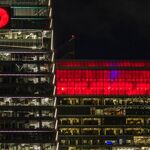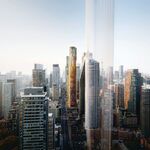44 North
Senior Member
TigerMaster does make some good points. This discussion often comes up, but no question Toronto is pretty unique for its Centres. London, a city of +8M, has two Centres. Yet we have many. But since we got the ball rolling, should we stop there? I wonder if there'd be any benefit of identifying a new CBD/Centre/UGC in Toronto. Specifically the Central-East waterfront area made up of EBF, West/Lower Don Lands, Keating, East Harbour, and maybe Lower Yonge.
Yes this area mostly falls within the existing UGC of Downtown Toronto. But an area the size of Downtown is pretty large to be considered as if it were one single unit. Example: many regard Yonge-Bloor as being a general 'uptown' separate from "downtown" - which makes sense considering the distance from King/Queen and that both areas are fairly unique clusters of residential/retail/office.
So would there actually be a benefit of detaching the Central-East waterfront from Downtown Toronto and have it become its own Centre? Maybe we could also do the same for Yonge-Bloor too. We already have an obscene amount of downtowns/Centres here and in the outer suburbs (which kinda renders the terms "downtown" or "centre" somewhat useless), so why not add more to the mix? Does it really make a difference? I do know that the East Bayfront LRT was never in the Big Move, surprisingly. Maybe changing how the area is ID'd would thus change the regional priority status for projects that fill in it.
Yes this area mostly falls within the existing UGC of Downtown Toronto. But an area the size of Downtown is pretty large to be considered as if it were one single unit. Example: many regard Yonge-Bloor as being a general 'uptown' separate from "downtown" - which makes sense considering the distance from King/Queen and that both areas are fairly unique clusters of residential/retail/office.
So would there actually be a benefit of detaching the Central-East waterfront from Downtown Toronto and have it become its own Centre? Maybe we could also do the same for Yonge-Bloor too. We already have an obscene amount of downtowns/Centres here and in the outer suburbs (which kinda renders the terms "downtown" or "centre" somewhat useless), so why not add more to the mix? Does it really make a difference? I do know that the East Bayfront LRT was never in the Big Move, surprisingly. Maybe changing how the area is ID'd would thus change the regional priority status for projects that fill in it.





